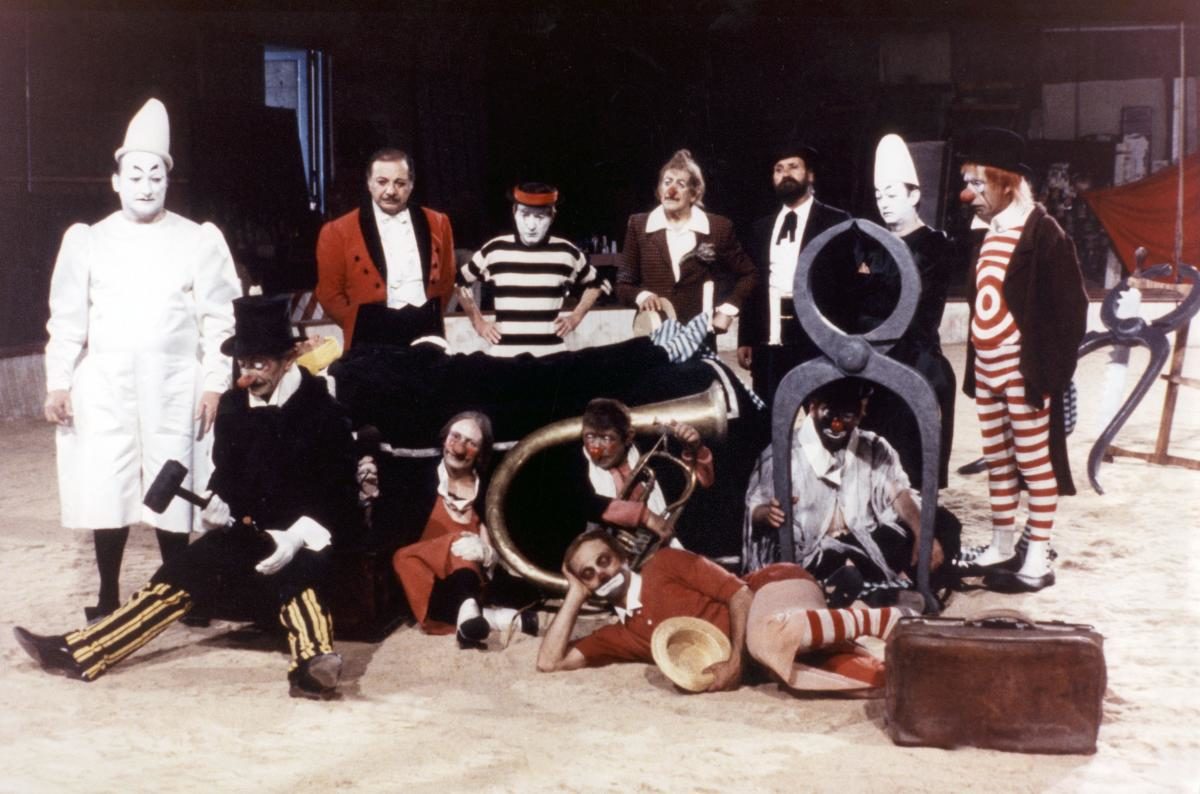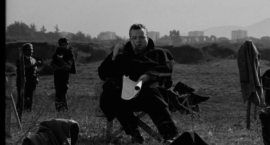Almost perfectly in synch with Cahiers du Cinéma’s 700th anniversary number celebrating the cinephiliac moment, Photogénie kicks off its series of Belgian moments, in which homegrown talents wax poetic about their cinematic epiphanies: be it lines, scenes or dreamlike experiences.
Episode 1 – Gust Van den Berghe
Budding director Gust Van den Berghe takes the lead, revealing his fetishes for clowns, death and thus, ideally, dead clowns. I first met Van den Berghe in 2010, the year in which he had managed to transform his graduation short into a feature film debut, En Waar de Sterre Bleef Stille Staan (Little Baby Jesus of Flandr; 2010), which was subsequently selected for the Quinzaine des Réalisateurs at Cannes, all this at the tender age of 24. The film and its director also found its way to the Athens International Film Festival, where I happened to be jury president, helming a panel full of young film enthusiasts like myself filling up on movies and moussaka. We were all quite skeptical of a film whose cast consisted almost entirely out of Down syndrome actors, fearing that it would be nothing more than an exploitative gimmick, and so we sat cross-armed in the theatre ready to dissect the picture with the blasé cinephile’s unflinching gaze. The opening won us over immediately, however, as one of the protagonists struggled through archaically poetic lines on religion in voice over and a four-minute pan exposed a bare Flemish landscape dusted with snow in grainy black and white. What follows is an intelligent religious parable that takes the essence of Felix Timmermans’ eponymous 1924 Three Kings play and turns it into a symbolic universe. The film keeps up an interesting tension that comes forth from confronting the figures with an existential text, while seeing them unwittingly drifting towards their fate, not shying away from overt symbolism and pictorial scenes that echo Ingmar Bergman’s Det Sjunde Inseglet (The Seventh Seal; 1957) at times. Van den Berghe unanimously took home the Best Director Award over Juan Carlos Valdivia’s pan-tastic Zona Sur (Southern District; 2009) and Hitoshi Matsumoto’s phallically imaginative Shinboru (Symbol; 2009), allowing me to unexpectedly flaunt a newfound sense of chauvinism on a Greek stage. Van den Berghe wasted no time following up on his debut by tackling the work of Nobel Prize winning Belgian author and Timmermans’ contemporary, Maurice Maeterlinck (an actual Symbolist this time), transposing his Blue Bird (1908) story to the Togo desert and exchanging grainy black and white for a blue filter and an extreme scopic format which the director refers to as “überscope.” Blue Bird (2011) thus presents the viewers with flattened images in which the mise-en-scène is extremely dependent on the aspect ratio, a style that ironically also caused Van den Berghe to miss out on certain funds because the images did not look “African” enough. The director is currently finishing an adaptation of Joost van den Vondel’s Lucifer (1654), playing again with language and context by setting the story in Mexico.
Moments – “È Morto”
I Clowns (Federico Fellini, 1970)

A man sneaks out of the hospital to see an act of two famous clowns in the circus. We watch him, watching the circus, he laughs, and applauds, he sweats but looks happy like a child. It is an honest joy of somebody who is one with an act he is experiencing.
When the show is over, and everybody has gone home, two men are cleaning the deserted seats, and our man sits there in the same spot. He doesn’t move anymore. They poke him with a stick and he falls over. “È morto,” they say, and a sad accordion theme plays while we move on to the next scene and we forget all about him.
This scene always struck me as a kid, because it was such a tragedy. It was such a short and beautiful moment in the film, and it didn’t last. It felt like the man didn’t die, but the show died, and we had to go on. The circus was over, everything came to an end, and as a kid you feel this simple emotions very strongly. You feel this man was so much into the performance that he disappeared in it. He left me with a double kind of joy. I understood him when he was clapping and cheering, so I was a part of him. But seeing him now, dead, meant that I wasn’t a part of him anymore. I became a spectator, who goes home when the show is over.
La Ricotta (Pier Paolo Pasolini – from Ro.Go.Pa.G., 1963)

The End. The main character, also a kind of clown, is an extra in a movie about the life of Christ. He is supposed to hang on a cross next to Jesus. During the whole shoot he had to wait, and now, finally, they are going to shoot his scene. Everybody is watching: the producers, the director, a bunch of journalists and the crew. For the first time, there is silence. They rehearse his only phrase once more: “Lord, remember me when thou comest in thy kingdom.”
That is the first majestic moment, not the phrase, but Pasolini made him say it twice. Twice. In real life we can say the same things only once, in film we say things twice. Then the director (played by Orson Welles) cries out “action,” but the man doesn’t speak anymore. Somebody climbs up a ladder to see what’s wrong. “È morto,” he says, and that’s life. It lasts for nearly a minute, but yet everything that matters is told. It is said in the silence after the action, for once without words. All of Pasolini’s brutality summed up in a silent, gentle moment, harmless, just as we are.